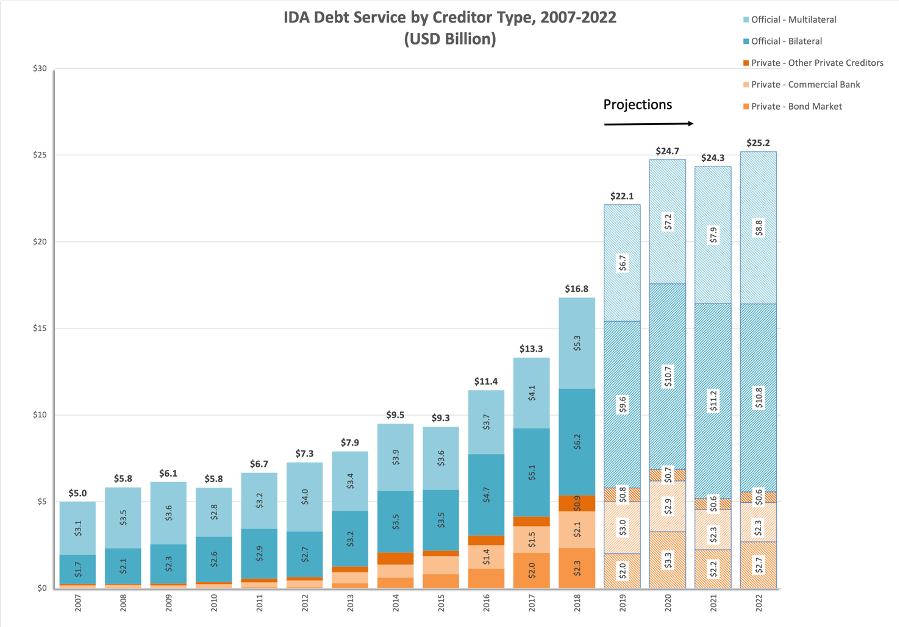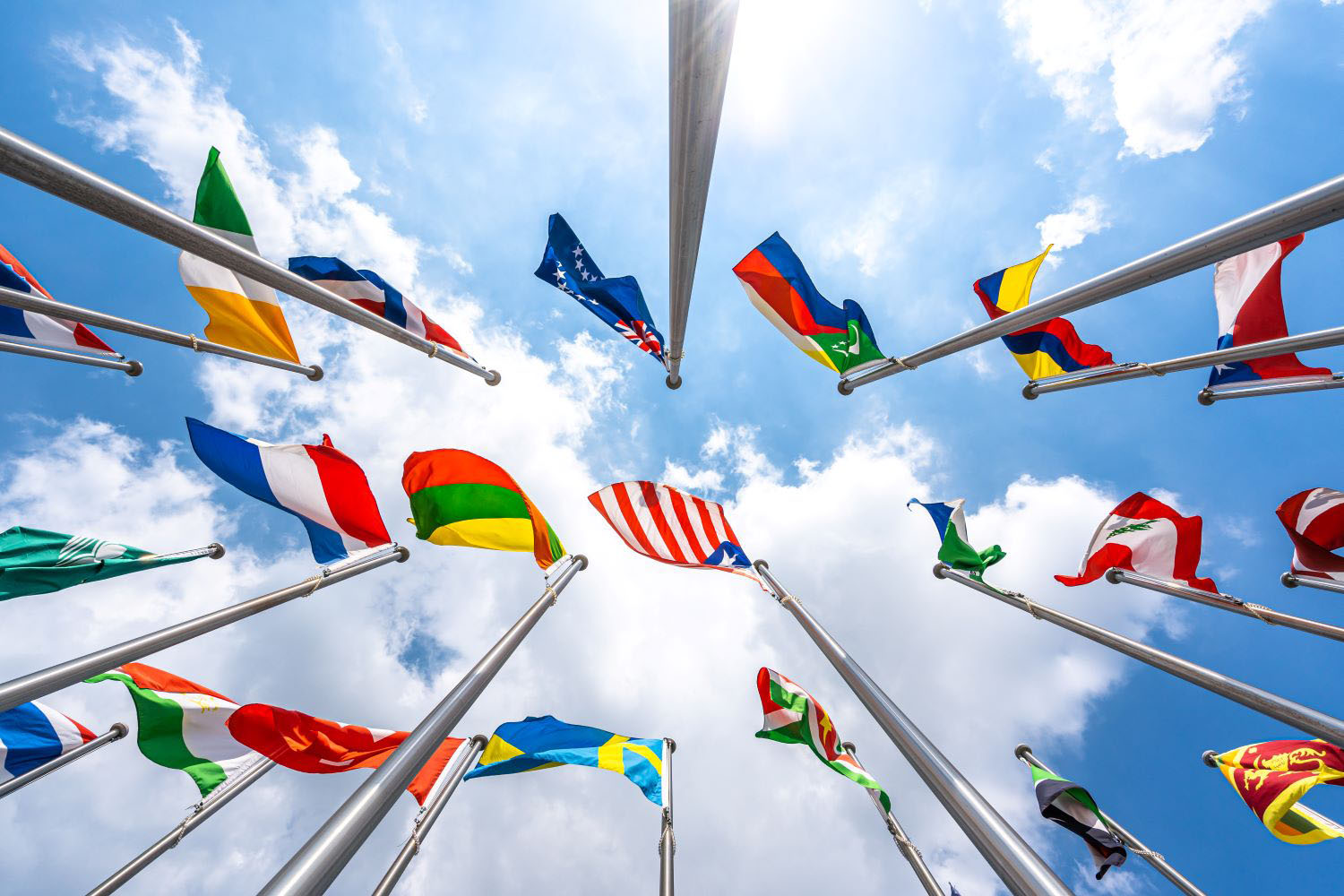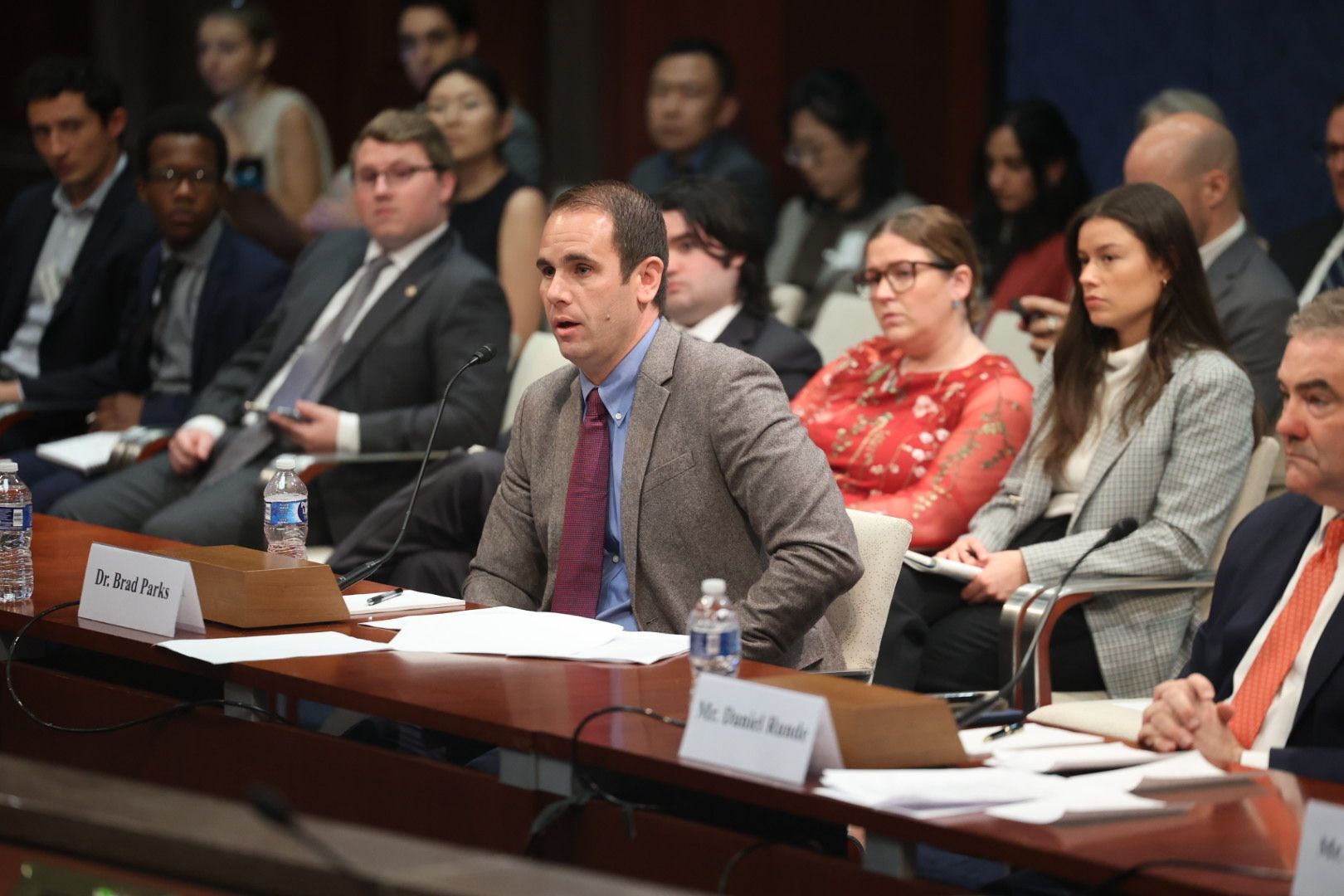Recommended
Multilateral and bilateral development finance institutions (DFIs) that fund the private sector are strongly signaling their willingness to step up to the challenge of the COVID-19 pandemic. The International Finance Corporation (IFC) has pledged $8 billion in emergency support to the private sector. Shareholders of the European Bank for Reconstruction and Development (EBRD) have approved a solidarity package of €1 billion as an initial allocation. And on April 6, the DFI Alliance of institutions from 16 OECD countries announced that they “are committed to working collaboratively to meet the unprecedented global demands resulting from the outbreak of COVID-19.”
But deciding how best to deploy DFI resources will not be easy or simple. These institutions chiefly offer finance on commercial terms to commercially viable projects. Lending or investing countercyclically into a global crisis is a struggle for them, as we saw during the global financial crisis. DFIs will face hard trade-offs. This is a moment to review lessons learned in the global financial crisis and to confront difficult questions that will be key in shaping their response.
The Role of the DFIs in a Crisis
DFIs are not central banks. They do not drive monetary policy stances and overall lending conditions in their countries of operations. Rather, during economic and other shocks, they must find ways to restart or boost financial intermediation for direct and systemic impact on target populations, sectors, and countries. But they must do so with an eye on their own balance sheets.
That remit could encompass a broad range of activities:
Reviving capital markets and flows
- Responding to sudden stops of external private capital flows for financing micro, small, and medium enterprises (MSMEs), small farmers, infrastructure, trade, and larger firms with high development impact
- Restarting local capital markets financing the same activities
Keeping firms and banks solvent and operational
- Shoring up existing partner firms and financial institutions with liquidity and capital
- Shoring up firms and financial institutions with strong development impact (whether existing partners or not)
Financing innovations to address the crisis
- Financing firms offering innovations, business models, or products that solve crisis-related problems, such as delivering medical services and medicines to excluded populations or power, water, and sanitation to clinics and hospitals
Protecting the most vulnerable
- Reducing the impact of the crisis on workers and the poor
- Boosting finance in low-income countries with the least developed private capital markets and the most binding scarcity of finance
- Boosting finance in countries hardest hit by the crisis
Developing a robust pipeline for post-crisis investments
- Focusing on being ready with a promising set of investments when growth resumes
It is hard to imagine that individual institutions can undertake all of this in their crisis response strategies, though it all needs doing. But how to prioritize? Taking a look at DFI performance in the global financial crisis might be instructive.
Lessons from the Global Financial Crisis
Independent evaluations of the crisis performance of the IFC and the EBRD offer some useful evidence. Both were key actors in the crisis—the IFC because of its size and global scope, the EBRD because of its private sector focus and operations in the region hardest hit by the crisis.
Countercyclical or procyclical: The IFC’s response was procyclical early in the crisis response; lending dropped 17 percent in 2009. The EBRD was highly countercyclical. The difference was a direct result of their different approaches to balance sheet concerns. For the IFC, the emphasis was on protecting its balance sheet from additional risk. The pullback was partly driven by an overestimation of projected portfolio deterioration due to an overly simple stress testing methodology. For the EBRD, protecting its balance sheet meant supporting its clients, given its heavy exposure to banks and other clients in Europe and Central Asia.
Risk management and clients: For the IFC, there was no change in the risk profile of new commitments. Nor was there much evidence of a shift in allocation toward countries hardest hit by the crisis. For the EBRD, increased funding mainly went to existing clients through augmenting existing commitments. The average size of crisis response projects was roughly three times that of pre-crisis projects. But due to staffing constraints, a minority of existing clients could receive new funding in response to crisis needs.
Liquidity vs. capital: The IFC’s biggest success was trade finance, as it was relatively easy to ramp up, relatively low risk, and profitable. The IFC launched other initiatives in bank recapitalization, asset recovery for banks, sustaining infrastructure investment, and support for microfinance. While the bank recapitalization fund was modestly successful, the rest failed to meet their finance targets. The EBRD’s willingness (in line with its financial interest) to provide finance to shore up the balance sheets of existing clients, especially banks without parent institutions, was important. But the capital was largely in the form of subordinated debt rather than equity. For EBRD financial institution operations, subordinated debt rose from 6 percent of pre-crisis operations to one-third of operations in 2009. In contrast, in its bank recapitalization efforts, the IFC found considerable demand for equity but less demand for subordinated debt. The EBRD sought a large expansion in trade finance in 2009, but the collapse in trade in the region actually reduced demand in the first three quarters of 2009. Foreign-currency finance dominated crisis response for both institutions.
Speed: The EBRD’s decision to prioritize existing, already-vetted clients and enlarge existing operations facilitated the speed of its response. The IFC’s approach was a more ambitious strategy of addressing the range of the damage done by the crisis to different segments of capital markets. As a result, it required building new facilities and new partnerships with other funders, including those willing to take first loss and other subordinated positions. These efforts naturally took longer, revealing a trade-off between attempting a comprehensive response and ramping up rapidly to have finance available in the early days of the crisis when it was most needed.
Loan pricing: EBRD borrowers reportedly objected to loan pricing and requirements for parent bank guarantees based on what they viewed as exaggerated country risk assessments. From a risk standpoint, there is clearly a rationale for a significant increase in DFI capital charges early in the crisis, with a decline over time as private finance returns. This applies to lending rates as well as to the DFI interest in increased equity stakes in order to capture a larger share of the upside during the recovery period. Yet, this rationale can run counter to the DFI role as countercyclical finance providers that reduce, not increase, the costs of the crisis on clients.
Principles to Guide the DFI Crisis Response
Especially in a crisis, DFIs, like any first responders, need to set priorities. They are in a particularly difficult position because, unlike other first responders, they face conflicts between their basic operating model and their effectiveness in a crisis. For this reason, it is worth trying to develop some basic guidelines, grounded in past experience, that help DFIs make choices in the context of extraordinary risks, needs, urgency, and trade-offs.
Below is an attempt at principles to guide decisions, recognizing that they will require flexible adaptation given the great uncertainty about where the pandemic will strike hardest, how long the global downturn will last, and which countries will enter into full-blown financial crises.
- Formulate a phased approach from the start. This is not just about adding to the size of the effort over time. Everything that has to be done cannot be done at once. Well-considered decisions have to be made about what is feasible and what is urgent in the initial response versus in later efforts. That means identifying an explicit sequence of DFI interventions that can have the greatest impact in sustaining development and on the incomes and well-being of the poor and vulnerable. The interventions have to be more targeted than boosting overall flows of credit and equity. And feasible should not be confused with easy. It may be easy to ramp up trade finance, but not particularly relevant early on given the pandemic-driven collapse of trade and supply chains. It may be painful to restructure existing clients’ credits, but that may be a quicker way to give those clients an equivalent amount of financial space than negotiating new credits.
- Plan for significant balance sheet damage to the DFIs’ own accounts. DFIs cannot play a useful role in these circumstances without such damage. The challenge is to identify how to manage the damage and how reserves and other resources can best be used to address it. Critically, management must, through realistic and credible financial scenarios, prepare shareholders and rating agencies to accept deterioration over some period of time and give them confidence that there is a plan to recover.
- Support existing clients, but prioritize clients with strategic importance. Supporting existing, previously vetted clients makes sense from the standpoint of speed and of sustaining development gains from previous investments. Offering funding or temporary repayment relief to these clients to replace other sources of finance no longer available is a core countercyclical function. Yet, DFIs will not have the resources to address all of the needs of all existing clients, while at the same time meeting other urgent priorities. They will need a robust framework to identify firms and financial institutions with strategic importance, through well-defined criteria such as:
- sectoral importance as leaders with strong demonstration effects;
- key role in reaching the poor and vulnerable as consumers or producers;
- providers of essential financial or infrastructure services with large spillover effects across the economy;
- critical foreign exchange earners;
- linchpins of regional integration and growth prospects, like regional airlines; and
- drivers of major value chains on which many smaller firms, farmers, and workers depend.
- Even in the immediate term, focusing only on existing clients is not enough. DFIs will rightly be judged by whether they reach firms, financial institutions, and countries hit hardest. Given limited staff, that means they must go through a painful process of abandoning some part of the current pipeline of forthcoming transactions in favor of new operations with new clients as well as new or restructured finance for existing clients. As in any crisis, poor and vulnerable households, their businesses, and farms will suffer the most. And the usual limitations of the commercial DFI model in reaching the poor and vulnerable will complicate DFIs’ efforts to respond. But this is opportunity to engage with banks, nonbank financial institutions, microfinance institutions, and mobile service providers that can reach the poor and vulnerable on a large scale. Some of these actors will already be DFI clients, but others would normally be outside DFIs’ comfort and profitability zone. (Here’s where cooperation among DFIs with varying degrees of familiarity with particular financial and payments systems and actors plays a crucial role—see below.)
At the country level, the worst affected will surely include low-income countries (LICs), as well as middle-income countries (MICs). MICs now receive much more than half of DFI finance, so effective crisis response will mean increasing operations and finding new clients in LICs.
Due to the specific risks posed by this crisis to health and other social services, DFIs will also be judged by whether they proactively seek out firms that offer such services, either in partnership with the public sector or through business models that can serve populations excluded by geography, poverty, or gender. This is an opportunity in fact for DFIs to offer access to finance—with subsidies if warranted—through competitive challenges. Demand for finance will not be the problem. Competition can help efficiently identify firms with credible business models for meetings these needs at scale. - The instrument mix will have to change. The dominance of senior lending in DFI portfolios is not well suited to restarting finance flows in a period of high risk. As in the global financial crisis, banks will not only need credit lines, but also capital. Firms whose revenues have collapsed will need flexible terms that limit debt repayments as a share of revenues. Partnerships with outside investors willing to accept subordinated positions may be desirable, but building partnerships is time-consuming and difficult. It may be quicker for DFIs to play that role themselves in the short run, especially in order to get finance to clients on the margins of the formal financial system. And the case for increasing the share of DFI lending in local currency just becomes stronger in a crisis, as currency volatility drives up repayment risk. DFIs, working together as in the case of The Currency Exchange Fund (TCX), should be able to use diversified currency pools and differences in currency risk across regions for hedging purposes.
- Loan pricing cannot be fully market determined during the crisis period. This is partly because markets are not functioning, and market prices are often not observable. It is also because crises are times when DFIs must function as first movers, which means they themselves must bear part of the costs and risks. DFI cooperation and a common DFI approach are critical here to avoid pricing competition across institutions that wastes scarce resources.
- Focus on workers as well as firms. The combination of the demand and supply shocks we are seeing in this crisis is causing massive, even unprecedented, layoffs in rich countries. We must expect the same as the virus spreads in developing countries. Ways must be found to extend the benefits of support for banks and firms to workers. DFIs could develop incentives in lending programs to firms, directly or through banks, to retain workers on their payrolls with partial or full wages. As part of loan contracts, firms could be rewarded ex-post for worker retention through partial loan forgiveness or interest rate discounts. This approach could be scaled up through public-private partnerships that, for example, combine World Bank support to governments for loan forgiveness with IFC lending to MSMEs that retain workers.
- Collaborate with other DFIs. The case for collaboration could not be stronger given the scale and the risks inherent in responding to this global crisis. This is not a time for DFIs to compete for the most creditworthy clients or the most profitable activities. They need to work out equitable plans to share risk and returns in ways that maximize their collective impact, share balance sheet costs, and share pipelines. The DFI Alliance has announced its commitment to collaborate. It can lead the way by making collaboration in investments and in sectoral and country strategies the default option rather than the exception.
Rights & Permissions
You may use and disseminate CGD’s publications under these conditions.






